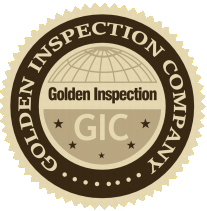


NON-DESTRUCTIVE TESTING
NDT TECHNIQUES HELP ASSURE SAFETY AND RELIABILITY THROUGH DETECTION OF ANY FLAWS OR DEFECTS IN PRODUCT OR INDUSTRIAL COMPONENTS


VT–VISUALTESTING METHOD
It is relatively easy and low in demands. The
equipment is used just for inspection of close
or
direct inaccessible areas, such as tanks, tubes
and vessels. In some qualification systems,
this
method is not recognized as regular NDT,
because it is “natural” activity. However, the
great
benefit is a transparency and understandable
reported information. We can measure defect
dimensions. Data storage is simple via photo.
VT can be applied everywhere, including object
with elevated temperature (it is contactless)
or risk of explosion (direct observation without
any appliance). Potential users are weld
workshops, assembly workplaces, inspectors
with high productivity demands. Knowledge is
useful also for engineers, which “need to look”
on the objects.
PT–LIQUIDPENETRANT METHOD
It’s simple improving of VT reliability in specific
applications. Although this is classified as
surface method, we can distinguish between
scratch and crack. Sensitivity increases, it
means better resolution with more susceptible
condition. Only open-to-surface defects can
be detected, good cleaning is necessary. We
reports just an indication; the real source stays
uncertain (it is common feature of every method
except VT).
PT can be applied to smooth, clean surfaces. A
productivity of PT lines is impressive: a batch
of small object can be processed at once. Using
fluorescent technique, the indication “shines”
and is clearly visible. It’s the only method for e.g.
chromium layer integrity investigation. A
manual technique of cans (sprays) is very
popular in the course of in-service inspections –
detection of flaws and fatigue cracks.
NON-DESTRUCTIVE TESTING
NDT TECHNIQUES HELP ASSURE
SAFETY AND RELIABILITY THROUGH
DETECTION OF ANY
FLAWS OR DEFECTS IN PRODUCT OR
INDUSTRIAL COMPONENTS


UT–ULTRASONICTESTING METHOD
Together with radiography, it is classified as a volume
method. It means that even
defect inside material can be detected. A little bit tricky
application, as the probe
can be applied on the object accessible surface only.
A typical application is a task of material integrity
approval, e.g. manufactured
semi-products (sheet, forging or casting) or welds.
Internal reflections can be
applied in advance. A lot of techniques have been
developed, such as pulse-echo,
transmission-through, Time-Of-Flight-Diffraction. We
need “to see” a defect in
specific direction range, however its distance (depth
under surface) may be very
long (a success of 12 meters in concrete was published).
On the other hand,
separated layers of CFRP composite can be recognised
– it means resolution of
about 0.1 mm. A specific application of a pulse-echo
technique is a measurement
of thickness; both manufactured (tolerances of the
sheet) and operated (corrosion
on back-wall or thickness decrease due to tube diameter
creep
ET–EDDYCURRENT METHOD
It is suitable for inspection of metallic object. The equipment is
similar to UT one
in the mean of its complexity. The application is easier and
more handy, as there
is not any couplant between our probe and the object surface.
However, the
inspected volume is limited to the surface and a near-tosurface layer.
A typical application is an investigation of manufactured tube
integrity (a whole
object is going through a coil) including welded tubes and their
leak-tightness
approval. A specific application with inner coil is an inspection
of heat exchanger
tubing. The basic application is scanning of critical areas of
operated structure
for expected fatigue damage (0.2 mm crack can be reliably
detected). We can
also measure sheet thickness (up to several mm), cladding
thickness (e.g. pure
aluminium on aluminium alloy), protective coating (painting)
thickness etc.
A material sorting is also very popular; even a correct heat
treatment can be
witnessed
